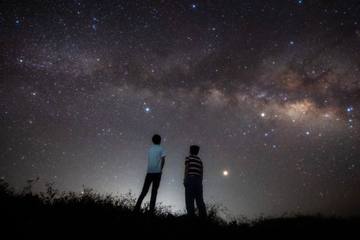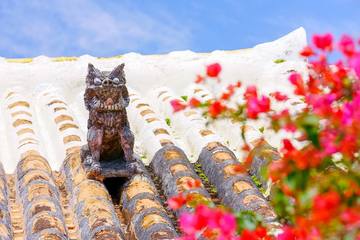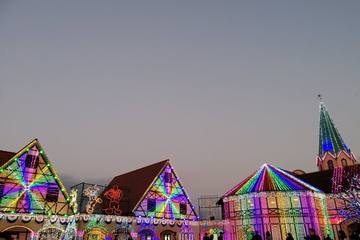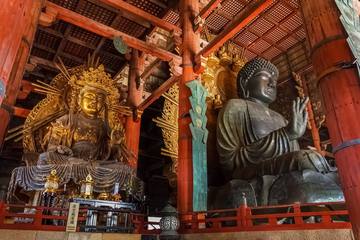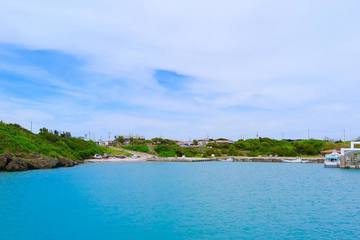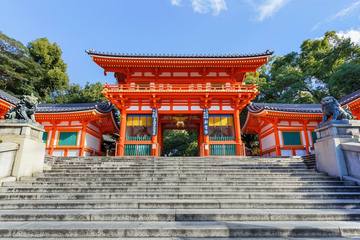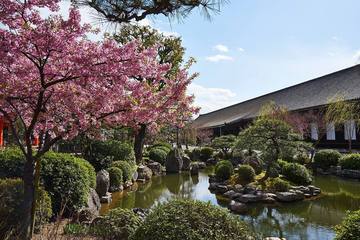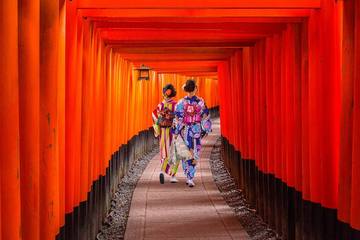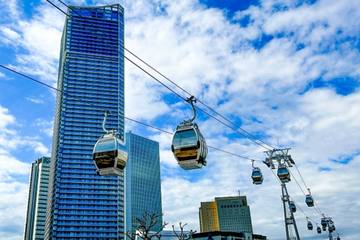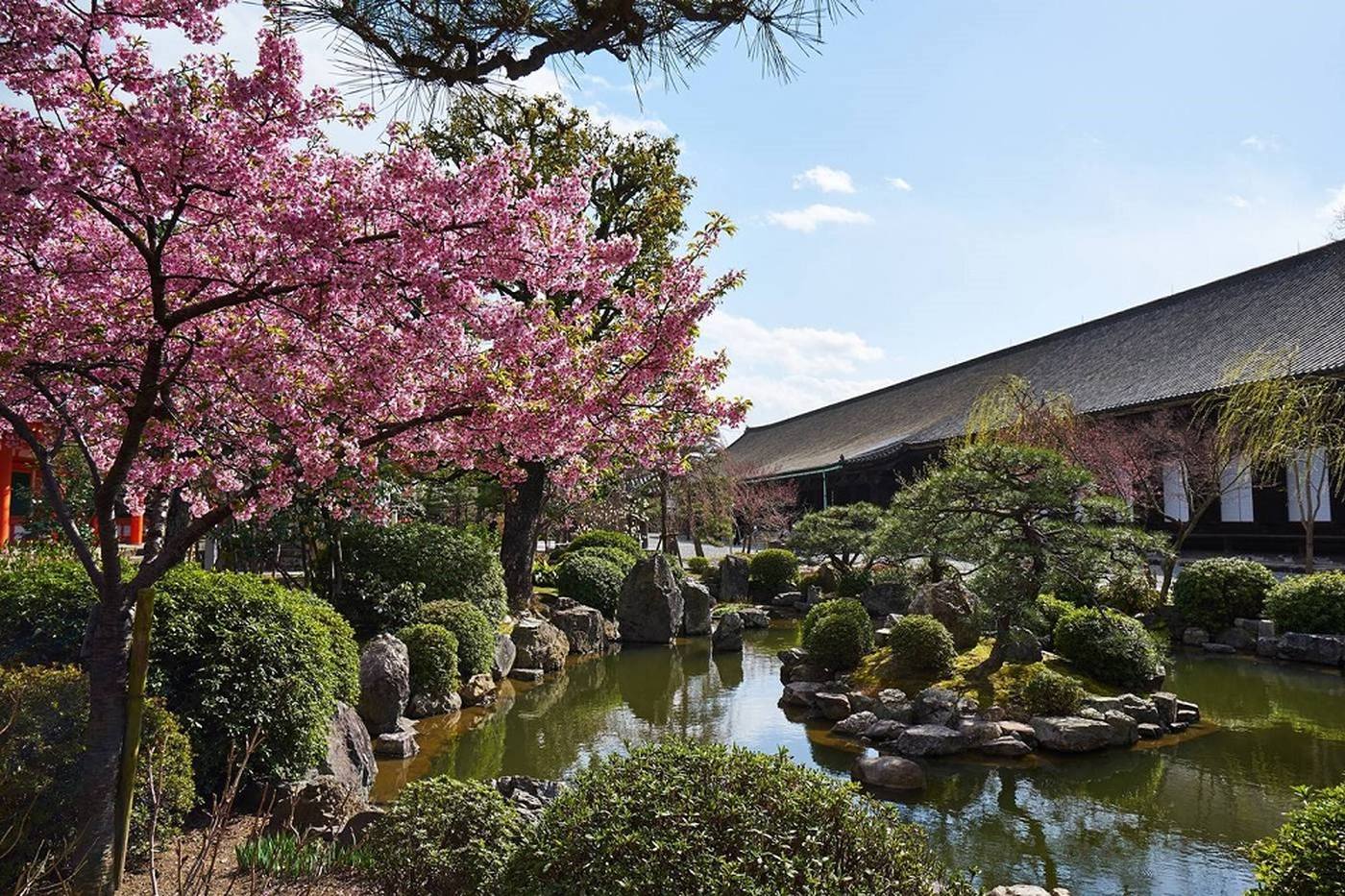
【Kyoto】Sanjusangendo, Visiting hours, History, Highlights, and Basic Information
Sanjusangendo, formally known as Rengeo-in Hondō, is a temple dedicated to the Thousand-Armed Kannon, also known as the Senju Kannon. Located outside the precincts of Myoho-in, a Tendai Buddhist temple, Sanjusangendo is renowned for its collection of 1,001 statues of the Thousand-Armed Kannon. The sheer magnitude of these statues captivates and attracts countless visitors. Let's explore the basic information, history, and allure of Sanjusangendo that you should know before your visit!
*This article is translated using ChatGPT.
For the latest information on each tourist spot and facility, we recommend checking the official website.
- 日本 、京都府
INDEX
Basic Information about Sanjusangendo
Are there any days when admission is free?
Buddha Statues and Highlights of Sanjusangendo
National Treasure | Senju Kannon Sitting Statue
National Treasure | Senju Kannon Standing Statues
Fujin and Raijin with the Twenty-Eight Attendants
Toshiya | Daikicho Grand Archery Tournament
Yanagi no Okaji (Willow Branch Blessing)
Lunch Spots near Sanjusangendo
Homemade Western Food Restaurant Sato
Recommended Sightseeing Route near Sanjusangendo
If you want to enjoy temple hopping in Kyoto, including Sanjusangendo
Basic Information about Sanjusangendo
Access
Sanjusangendo is easily accessible from Kyoto Station, which is the central hub for tourism. From Kyoto Station, you can take the City Bus 100, 206, or 208 for about 10 minutes and get off at "Hakubutsukan Sanjusangendo" bus stop, which is right in front of it. If you prefer taking the train, it's about a 10-minute walk from Keihan Shichijo Station. There is a dedicated parking lot available for free.
Address: 657 Sanjusangendo-mawari-cho, Higashiyama-ku, Kyoto City, Kyoto Prefecture
Visiting Hours
April 1st - November 15th: 8:30 AM - 5:00 PM (Last entry: 4:30 PM)
November 16th - March 31st: 9:00 AM - 4:00 PM (Last entry: 3:30 PM)
Admission Fees
Adults: 600 yen High school and middle school students: 400 yen Children: 300 yen
Are there any days when admission is free?
The precincts are open to the public for free on the following days: the mid-January Daikicho Grand Sumo Tournament, the March 3rd Spring Peach Blossom Festival, and the May Gogatsu-kai. Please check the official website for detailed dates.
How long does a visit take?
If you mainly focus on the main hall, a stay of about 40 minutes is recommended. However, if you want to explore all the highlights in detail, it may take more time. Plan your visit according to your schedule.
Buddha Statues and Highlights of Sanjusangendo
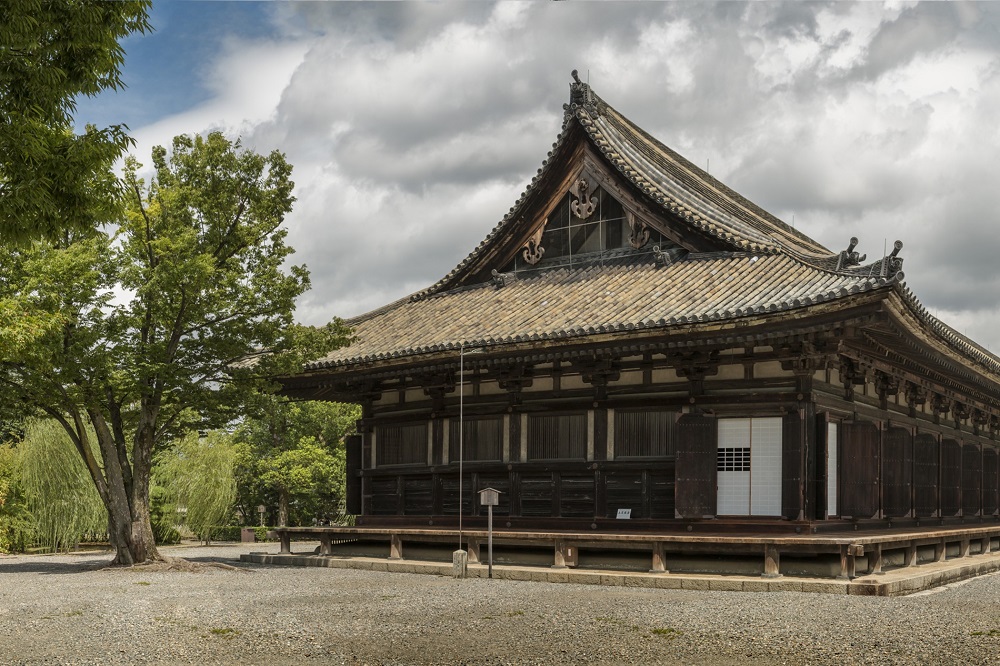
National Treasure | Senju Kannon Sitting Statue
The Senju Kannon Sitting Statue is the main deity of Rengeo-in and was created by the Buddhist sculptor Tankei and his disciples during the late Kamakura period. It is enshrined at the center of the 1,000 standing statues. This large sitting statue measures 3.35 meters in height, and when including the halo behind it, it reaches approximately 7 meters. It is made of cypress wood with a lacquer finish and adorned with gold leaf, designated as a National Treasure. With its 42 arms depicting "senju" (a thousand hands), it has a precious and warm expression that is distinctive.
National Treasure | Senju Kannon Standing Statues
These statues are arranged on both sides of the central Senju Kannon Sitting Statue. They are arranged in neat rows of 50 statues in each of the 10 columns, creating a spectacular sight unique to Sanjusangendo. Behind the sitting statues, there is also one standing statue, making a total of 1,001 statues.
Made of cypress wood with a lacquer finish, just like the main statue, each of these statues has 11 faces and 40 hands, showcasing exquisite craftsmanship. Most of the statues were lost in a fire in 1249, and only 124 statues from the original Heian period (794-1185) remain. The remaining statues were reconstructed over a period of 16 years during the Kamakura period (1185-1333) in a major national project involving renowned Buddhist sculptors from all over Japan. It is said that these meticulously crafted statues, created with great dedication, each embody a unique expression, and some say that you can find a statue resembling someone you want to meet. In 2018, they were designated as National Treasures.
Fujin and Raijin with the Twenty-Eight Attendants
The Twenty-Eight Attendants refer to the attendants of the Senju Kannon. In Sanjusangendo, in addition to the Twenty-Eight Attendants, there are 30 life-sized statues, including Fujin (the god of wind) and Raijin (the god of thunder), standing in front of the thousand-armed Buddha.
These statues are made of cypress wood with painted colors, and each one is crafted based on the respective deity of the Twenty-Eight Attendants. Some wear armor, while others hold musical instruments, displaying unique expressions and appearances that differ from the Senju Kannon statue.
Taiko Wall
The Taiko Wall is a clay-casted wall built during the Momoyama period (late 16th century) through a donation by Toyotomi Hideyoshi. It was originally built as part of the fence surrounding the Daibutsuden (Great Buddha Hall) of Hokoji Temple, which no longer exists today. Only the Taiko Wall and the Nandaimon Gate remain.
"Taiko" refers to a title given to someone who voluntarily relinquishes the position of regent to their descendants. The wall features the Toyotomi family crest, the "Paulownia crest." It is called the Taiko Wall because Hideyoshi held the title of "Taiko." With its rich Momoyama cultural style, it has been designated as an Important Cultural Property by the government.
History of Sanjusangendo
The name "Sanjusangendo" derives from the unique feature of the inner sanctuary of the grand main hall, which spans 120 meters north to south and contains "33 pillars." The number "33" also has significance, based on the episode that the Kannon deity can transform into "33 different forms" for the salvation of people.
Sanjusangendo was originally built as the main hall of Rengeo-in, donated by Taira no Kiyomori in 1164 and constructed as a detached palace within the Hōjuji Temple grounds, belonging to the retired Emperor Go-Shirakawa. It is said that the exterior of the building was adorned in vermillion, while the interior was lavishly decorated with vibrant colors, featuring floral and cloud patterns.
However, it was destroyed by fire 80 years after its initial construction. It was later rebuilt in 1266 under the patronage of Emperor Go-Saga. The current structure has survived since then. During the Muromachi period, under the patronage of Ashikaga Yoshinori, significant restoration work took place, which took approximately five years to complete.
Tankei, the renowned sculptor who created the Senju Kannon Sitting Statue designated as a National Treasure, is the son of Unkei, famous for sculpting the Kongorikishi statues at the Southern Great Gate of Todaiji Temple. The Senju Kannon Sitting Statue became Tankei's final masterpiece.
The Senju Kannon Bodhisattva is also the guardian deity of the Year of the Rat. If you were born in the Year of the Rat, visiting Sanjusangendo to seek even greater blessings might be worth considering.
Traditions of Sanjusangendo
Toshiya | Daikicho Grand Archery Tournament
The "Toshiya" is an archery competition that has been held since the Momoyama period. Participants shoot arrows from the southern end of the temple, aiming to pass them through a distance of 120 meters. During the Edo period, a popular event called "Oyakazu" involved shooting thousands of arrows continuously over a day and night, competing based on the number of arrows shot. This competition showcases the physical strength and sharpened spirits of martial artists, particularly gaining popularity between the two clans of Owari and Kishu, eventually becoming a famous event in Kyoto.
Inspired by the Toshiya, the "Daikicho Grand Archery Tournament" is now held annually on a Sunday in mid-January, where archers from across the country compete to showcase their skills. On the day of the tournament, the temple grounds are open to the public for free, attracting a large crowd of spectators and adding to the festive atmosphere of the New Year.
Shunto-kai
Shunto-kai is a memorial event held on March 3rd, which coincides with the repeated occurrence of the number "3" in the name "Sanjusangendo." The event includes the floral offering ceremony and flower exhibition by the Ikenobo school of flower arrangement, as well as performances. During this event, the temple grounds are open to the public for free. Visitors have the opportunity to receive a special "Peach Charm" exclusively for women, in celebration of Hinamatsuri (Girls' Day).
Yanagi no Okaji (Willow Branch Blessing)
Yanagi no Okaji is a traditional ritual that dates back to the Heian period. It takes place on the same mid-January Sunday as the Daikicho Grand Archery Tournament, and the temple grounds are open to the public for free. Monks from Myohoin, the temple overseeing Sanjusangendo, including the head priest, pour sacred water infused with prayers onto the heads of visitors using willow branches, which are considered sacred trees. The ritual is performed with the wish for healing from illnesses. This custom originated from the anecdote of Emperor Go-Shirakawa, who suffered from headaches and found relief after using willow from Yanagi no Sato (Willow Village) as a building material for Sanjusangendo. It is believed that the small branches of the willow received during the ritual have the power to heal headaches.
Amulets of Sanjusangendo
Based on the anecdote of Emperor Go-Shirakawa's healing from headaches, Sanjusangendo offers amulets known as "Headache Protection Charms." These charms are believed to ward off headaches. They also provide "Epidemic Protection Amulets" that are said to have the merit of warding off infectious diseases and serious illnesses. Additionally, at the "Yonaki Izumi" (Crying at Night Spring) within the temple grounds, there is a bib for the Jizo statue. It is said to have the blessing of preventing nighttime crying in children.
Lunch Spots near Sanjusangendo
Soba Charyo Sawamasa
This restaurant offers soba kaiseki meals with a focus on quality ingredients. The menu changes monthly to incorporate seasonal ingredients. The interior is renovated from a reception hall dating back to the early Showa period, and the dishes are served in exquisite Shimizu-yaki pottery made by local kilns. It's a visually pleasing and delicious dining experience.
Address: 33-22 Kamimeno-kenmiya-cho, Higashiyama-ku, Kyoto City
Homemade Western Food Restaurant Sato
A Western-style restaurant that has been dedicated to homemade dishes for over 45 years. Their signature handmade hamburg steak, made with freshly ground meat and cooked slowly in the oven, is a guaranteed satisfaction. It's reasonably priced and popular among school trip students. They also have a wide selection of desserts, making it suitable for cafe-style dining as well.
Address: 451-1 Shibuya-shita-cho, Higashiyama-ku, Kyoto City
Okumura
This restaurant offers healthy obanzai (traditional Kyoto-style home cooking) made with seasonal Kyoto vegetables. Their "Kyoto Obanzai Lunch" allows you to choose and combine your favorite items from a daily selection of 20 different obanzai dishes, providing a convenient way to savor the flavors of Kyoto.
Address: 563 Sanjo-sagaru, Nishinomon-cho, Higashiyama-ku, Kyoto City
Recommended Sightseeing Route near Sanjusangendo
Sanjusangendo is conveniently located right in front of a bus stop, and buses to other popular tourist attractions also depart from there, making it an ideal starting point for sightseeing. Additionally, there is another bus stop called "Higashiyama Shichijo" just a 3-minute walk away. By using Sanjusangendo as a base, you can easily move around without transfers to the following attractions!
<Using the "Hakubutsukan Sanjusangendo-mae" Bus Stop>
From Sanjusangendo to Kiyomizu-dera Temple: Take the City Bus routes 86, 100, or 106.
From Sanjusangendo to Ginkaku-ji (Silver Pavilion): Take the City Bus route 100.
From Sanjusangendo to Heian Shrine: Take the City Bus route 110.
<Using the "Higashiyama Shichijo" Bus Stop>
From Sanjusangendo to Toji Temple: Take the City Bus routes 202, 207, or 208.
From Sanjusangendo to Tofuku-ji Temple: Take the City Bus routes 88, 202, 207, 208, or 58.
These bus routes will take you directly from Sanjusangendo to the respective temples and shrines, allowing for convenient transportation to these popular attractions in Kyoto.
If you want to enjoy temple hopping in Kyoto, including Sanjusangendo
Sanjusangendo, an essential stop for shrine and temple visits, has excellent access to other tourist attractions. It's a must-visit spot when exploring Kyoto. If you want to fully enjoy Kyoto, which is scattered with numerous temples, I recommend convenient local optional tours. VELTRA offers a variety of local optional tours, ranging from bus tours that cover major sights in half a day to private charters for a leisurely experience. Exploring Kyoto while listening to the knowledgeable explanations of the tour guides will surely bring new discoveries even for repeat visitors. Be sure to check them out!
*Transportation options, facility fees, and operating hours are subject to change without notice. Please check the official website for the latest information.
*Thank you for reading the article!
To improve YOKKA's service, we kindly request your participation in a survey below.
YOKKA

